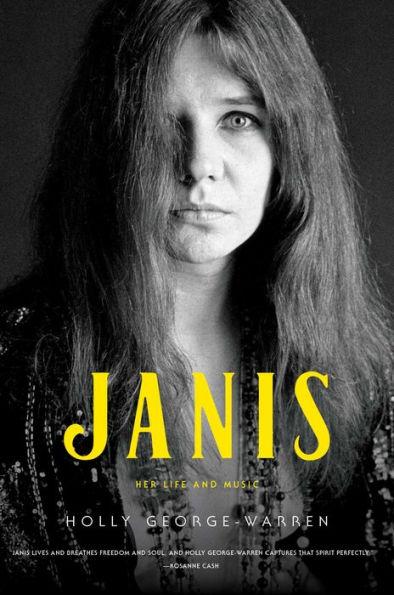
BIOGRAPHY
Holly George-Warren
Janis: Her Life and Music
Simon & Schuster
Hardcover (also available as an ebook, an audio book, and on audio CD), 978-1-4767-9310-8, 400 pgs., $28.99
October 22, 2019
Numerous books have been written about Texas singer Janis Joplin and her brief but spectacular reign as America’s “Queen of Rock ’n’ Roll” during the psychedelic 1960s. This new biography, written by award-winning author Holly George-Warren, however, likely may be deemed “best of the best” by many music fans.
Janis: Her Life and Music is a well-researched, smoothly written chronological study that tracks Janis Joplin’s Texas childhood, her rise to international stardom, her sudden death at twenty-seven, and her enduring musical creations.
The author has written or co-authored sixteen books, mostly focused on American music. Her 2014 book The Road to Woodstock, co-authored with the festival’s producer, Michael Lang, was a New York Times bestseller. She also has received two Grammy nominations.
While writing this book, she received “unprecedented” access to Janis Joplin’s family, as well as many of the singer’s friends and band members, plus letters and diaries. During her extensive archive research, she also uncovered several long-lost interviews.
Janis Joplin was considered a wild, nonconforming spirit while in high school in Port Arthur. Yet, she likewise was developing into a talented and disciplined performer. She also was lonely and had conventional but hidden longings. Later, at her fame’s peak, the author writes Joplin was still “trying to find a way to reconcile her ambitions as a singer with her desire for some kind of loving attachment.”
Unfortunately, she lived amid difficult times for finding lasting love and settling down. The late 1960s and early 1970s were turbulent and disconcerting. Daily life often was roiled by news of massive anti-Vietnam War protests, racial unrest, and political upheavals, as well as arrests or shocking assassinations of major political and social-reform figures.
A music revolution was spreading, too. Waves of rock ’n’ roll, blues, folk, gospel, and even Indian sitar tunes kept sending young people in motion, surging from town to town and coast to coast in search of peace, meaning, concerts, and, often, mind-numbing drugs.
Janis Joplin had grown up loving folk music, jazz, and black music, especially. As the biography shows, songs by black artists such as Leadbelly, Bessie Smith, Big Mama Thornton, Odetta, and others had helped feed her interest in singing. After troubled times in Port Arthur, she briefly fled to San Francisco’s drug scene and then returned to Texas, attempting conformity and college for a while. But she also kept singing, honing her unique voice, and gaining fans in Austin at Threadgill’s, a gas station turned beer joint. (It’s now a restaurant and music venue.)
She returned to San Francisco and struggled to gain traction, but finally caught on with the band Big Brother and the Holding Company in 1967. From there, her fame quickly shot up. As Holly George-Warren’s biography lays out, however, just three years, three bands, and three albums later, Janis Joplin died in 1970 from a heroin overdose in a Hollywood motel.
Today, her songs and her earthy, exuberant voice continue to be heard in recordings still appreciated by millions. With this fresh biography, many new readers can discover Janis Joplin and be inspired to help keep her vocal legacy alive.
Holly George-Warren is a two-time Grammy nominee and the award-winning author of sixteen books, including the New York Times bestseller The Road to Woodstock (with Michael Lang) and the biographies Janis: Her Life and Music, A Man Called Destruction: The Life and Music of Alex Chilton, and Public Cowboy No. 1: The Life and Times of Gene Autry. She has written for a variety of publications, including Rolling Stone, the New York Times, the Village Voice, and Entertainment Weekly. George-Warren teaches at the State University of New York in New Paltz.
